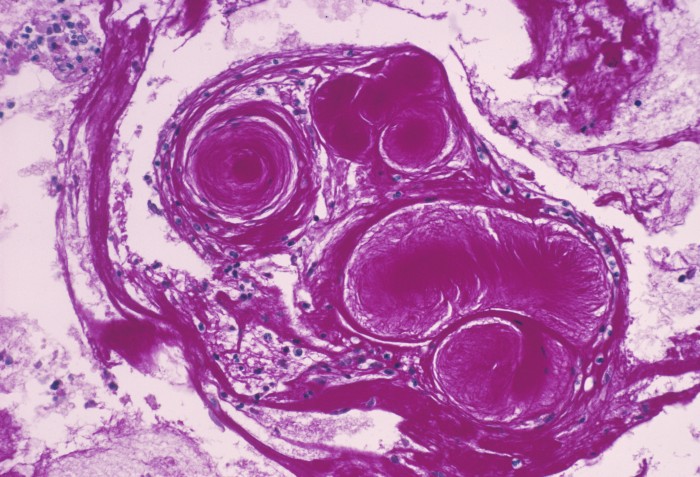Administration of nanoparticles in utero repaired the mutated Cftr gene

Cystic fibrosis, a life-threatening inherited disorder that affects the lungs and other organs, can have such damaging effects on the body in early life that some researchers think it would be better to correct the underlying gene defect before a baby is even born. Such a therapy is likely years away from reality, but researchers at Yale have made an important step forward in making it possible.
A team there has used a type of gene editing in the fetuses of pregnant mice to correct a mutation in the cystic fibrosis transmembrane conductance regulator (Cftr) gene that causes cystic fibrosis1. They developed biodegradable nanoparticles carrying donor DNA and artificial molecules that mimic DNA, called peptide nucleic acids, to target the Cftr gene. The nanoparticles bind to the gene and form a triple helix, which triggers repair mechanisms in fetal cells harboring the mutation to essentially fix themselves.
“We’re provoking some of the cell’s own DNA repair pathways, which catalyzes the gene editing,” says Peter Glazer, a professor of therapeutic radiology and genetics at the Yale School of Medicine and an author of the study, which was presented last week at the American Society of Cell & Gene Therapy conference in Washington, D.C.
The approach is designed to correct a single point mutation, one in which just one or a few nucleotides in a gene are changed or deleted. The mutation in the Cftr gene that the Yale team corrected, F508del, is the most common one that causes cystic fibrosis.
The group found that the nanoparticles could be delivered safely to fetal mice at 15 days of gestation either intravenously or via the amniotic fluid, which moves freely in and out of a fetus’s lungs in utero. The therapy was able to restore function to the Cftr gene, showing “clinically relevant levels of gene editing,” according to first author Adele Ricciardi, a graduate student at the Yale School of Medicine. The mice with the repaired genes were born, and Their lungs appeared normal without evidence of inflammation. The team will continue to study their organ health.
Ricciardi speculated that it would be safe to deliver the therapy in humans at around 18 weeks of gestation, although clinical trials are years away.
Early intervention
Babies born with cystic fibrosis can have low-functioning pancreases, bowel obstructions and collapsed airways. Treating cystic fibrosis in the womb could prevent such organ damage. Ricciardi says the idea is to intervene before fetal organ development is complete. One of the problems with developing traditional gene therapy, which would be given to children and adults with cystic fibrosis, has been the difficulty of correcting enough cells to have a therapeutic effect.
Mitchell Drumm, a professor of genetics at Case Western Reserve University who researches cystic fibrosis, says the approach is intriguing: “[In utero] may be our best window in which to have efficacy, but it may also be the one that has the biggest can of worms.” A major consideration is that any type of in utero therapy would have to be safe for both the fetus and pregnant woman.
This study, which is still unpublished, joins another recent one2 in which gene editing was used in utero to fix a genetic defect in mice. In that study, researchers used CRISPR to correct mutations in the surfactant associated protein C (Sftpc) gene, which can cause lung disorders like surfactant metabolism dysfunction and pulmonary fibrosis. Last year, scientists demonstrated a similar in utero fix in mice for a rare liver disorder known as hereditary tyrosinemia type 1 (ref. 3).
Drumm says if the peptide nucleic acid method works, it could have fewer off-target effects than CRISPR.
A study published in March4 found that in utero treatment with ivacaftor, a cystic fibrosis drug used to reduce lung problems, prevented male infertility, pancreas problems and lung disease in ferrets engineered to have a mutation that causes cystic fibrosis. Treatment with the drug, which restores the function of the CTFR protein, is usually started after the first year of life.
(원문: 여기를 클릭하세요~)